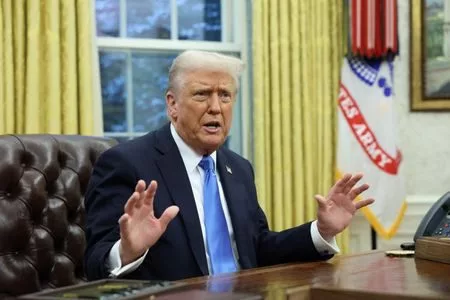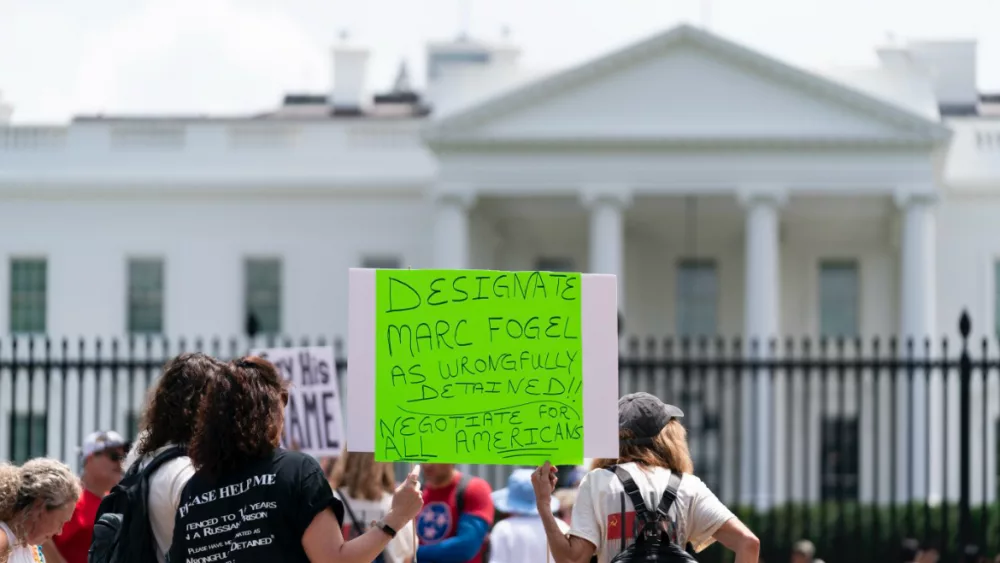By Andy Sullivan
WASHINGTON XX – President Donald Trump has pursued a radical overhaul of the U.S. government since taking office on January 20, aiming to slash spending and dramatically downsize the 2.3 million strong civil service. He has deputized billionaire Elon Musk to head a “Department of Government Efficiency” that is combing through payment and personnel records.
Trump told reporters on Tuesday that the effort could cut $1 trillion from the federal budget, which totaled $6.75 trillion in the most recent fiscal year.
Independent budget experts, meanwhile, warn that Trump’s tax cut plans could worsen the nation’s long-term fiscal picture.
WHAT IS THE PROBLEM?
The U.S. government has spent more money than it has collected every year since 2001, leading to annual budget deficits and a steadily growing debt load.
The country has borrowed heavily to fight wars in Iraq and Afghanistan, finance tax cuts, respond to natural disasters, and help Americans weather the 2007-2009 recession and the COVID-19 pandemic. But Washington has run deficits even when the country is not in crisis.
Debt held by the public now stands at $28.9 trillion, equal to 100% of GDP, and the nonpartisan Government Accountability Office predicts it will reach 107% of GDP, a record high, by 2027.
Total debt, which includes obligations to government benefit programs, stands at $36.2 trillion, according to the Treasury Department.
The growing debt load and rising interest rates have pushed up borrowing costs. The government spent $881 billion on interest payments in the most recent fiscal year, more than triple the amount it spent in 2017. Borrowing costs now exceed defense spending and are projected to account for a growing share of the budget in the years to come. That will leave less funding available for other uses.
Increased government borrowing could also slow economic growth and increase the likelihood of a fiscal crisis.
An aging population will push up spending on retirement and health programs, while the labor force that provides income tax revenue is projected to grow more slowly.
Over the years, both Democrats and Republicans have floated budget plans to tame the debt, with Democrats typically calling for higher taxes on the wealthy and Republicans calling for spending cuts to domestic programs.
WHAT HAS TRUMP DONE?
Since taking office on January 20, Trump has launched a radical downsizing effort that has sparked street protests and accusations that he is overstepping his authority as president. His point person on that effort, billionaire Elon Musk, has led a small team that has combed through payment and personnel records, raising security and privacy concerns.
Labor unions and Democrats have managed to temporarily block many of his policies in court.
Nevertheless, Trump has effectively dismantled the U.S. Agency for International Development, which dispenses foreign aid in 130 countries.
That has closed refugee clinics in Thailand, shut off anti-malaria programs in Africa, and furloughed thousands of workers.
But any budget savings would be limited: the agency spent $42 billion in the 2023 fiscal year, equal to 0.6% federal outlays that year.
Trump’s lieutenants have also shuttered the Consumer Financial Protection Bureau. That would also yield minimal savings for taxpayers, as the watchdog agency spent $777 million last year, funded through the Federal Reserve.
Trump has ordered the government to cut off spending on diversity efforts and green-energy programs across the government. The extent of those savings is unclear at this point.
Trump and Musk say they also aim to cut off fraudulent payments, a perpetual problem that ballooned when fraudsters targeted poorly designed COVID-19 relief programs.
Federal agencies reported $236 billion in improper payments in the 2023 fiscal year, with the majority through the Medicare and Medicaid health plans and unemployment aid.
GAO estimates the total of fraud and improper payments could be as high as $521 billion annually, equal to 8% of spending last year.
FEDERAL WORKERS
Trump also is pushing to dramatically reduce the size of the federal civilian workforce through layoffs or voluntary buyouts.
The government spent $271 billion on salary and benefits for those workers in the 2022 fiscal year, according to CBO, equal to 4.3% of total spending that year.
Trump’s buyout proposal would not yield immediate savings, as it would pay workers through September 30, the end of the fiscal year.
A dramatic reduction in the federal workforce could disrupt government services. Roughly 70% of the civil service works at national security agencies like the Department of Homeland Security and the Justice Department.
WHAT PROGRAMS ARE OFF LIMITS?
Before Trump entered politics in 2015, Republicans occasionally called for scaling back the Social Security retirement program and the Medicare health plan for retirees.
Trump has declared both of those popular benefit programs off limits, which will make it more difficult to cut overall spending.
Social Security and Medicare accounted for 35% of the $6.75 trillion federal budget in the last fiscal year and are projected to equal 43% of the budget 10 years from now, according to the nonpartisan Congressional Budget Office.
Trump likewise can do little to reduce debt service payments, which accounted for 13% of the budget last year, without risking a default that would rattle global financial markets and risk economic turmoil at home.
Those three categories alone accounted for nearly half of all spending last year.
WHAT IS CONGRESS DOING?
The U.S. Constitution gives Congress authority over spending matters, and Democrats argue that Trump does not have the authority to shutter agencies and cancel spending programs that have been authorized by law. But Republicans who control both the U.S. House of Representatives and the Senate have cheered his efforts.
Republicans are preparing budget plans of their own that would boost military and border-security spending and cut domestic spending, though they have yet to agree on the details.
They are also laying the groundwork to extend Trump’s 2017 tax cuts, which are due to expire at the end of this year, and enact new tax cuts that Trump promised during his presidential campaign.
If they succeed, that would likely worsen the United States’ fiscal picture. The Committee for a Responsible Budget projects that the tax package would reduce revenues by $5 trillion to $11 trillion over the coming 10 years. That would boost the nation’s debt load to as high as 150% of GDP by that point, the nonpartisan group says.
(Reporting by Andy Sullivan; Editing by Stephen Coates)
Brought to you by www.srnnews.com







